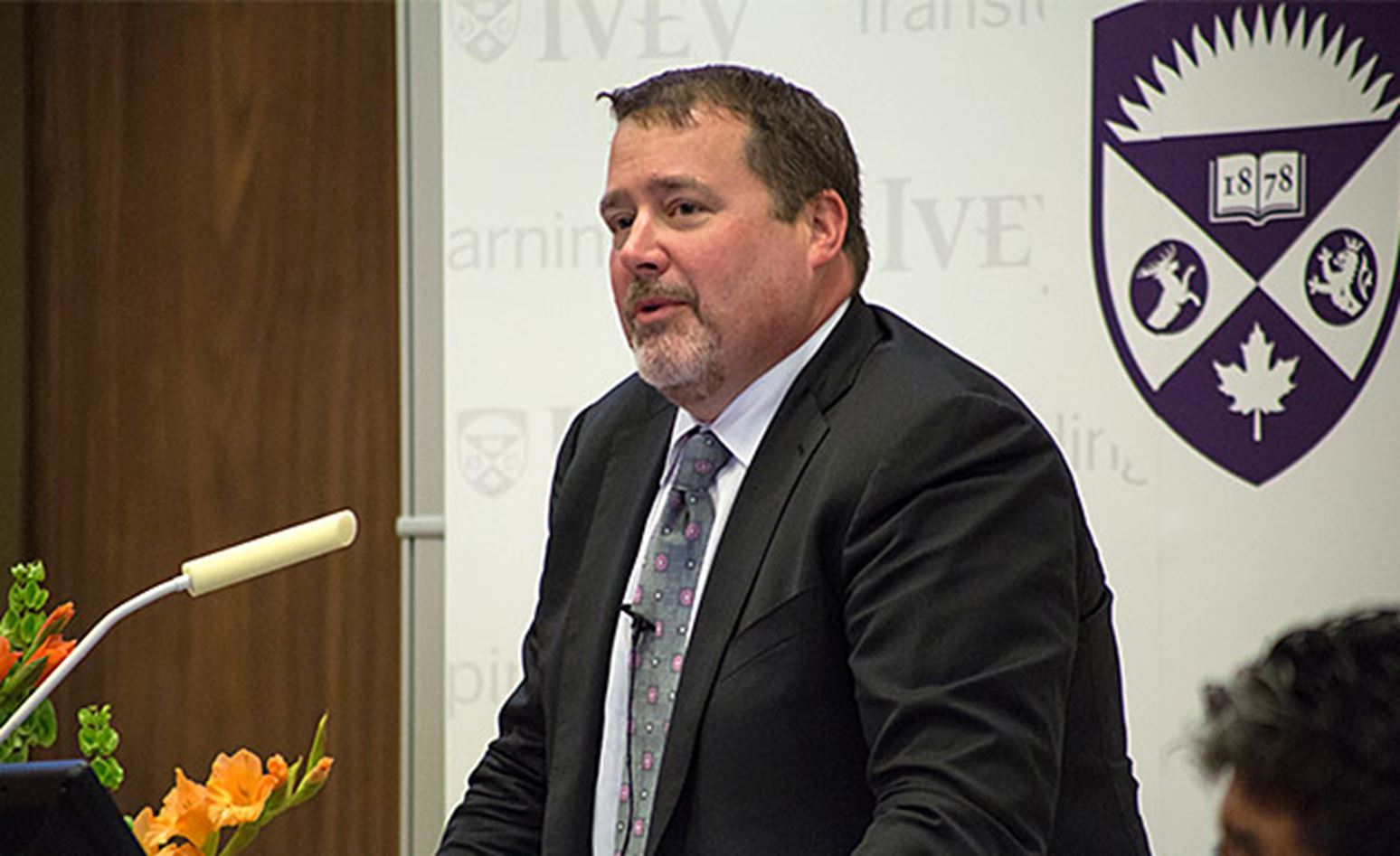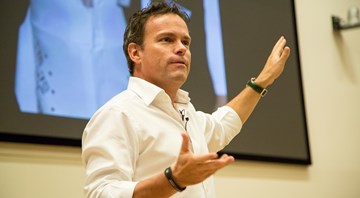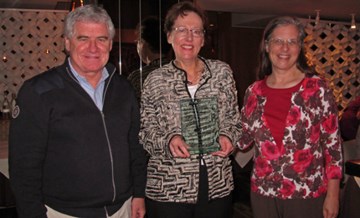Although the potential is enormous, the obstacles are equally so.
That’s why it’s critical to have a policy framework in Canada that enables energy production to thrive.
That was the message from panellists participating in an event for 130 Ivey students and faculty on the future of the Canadian energy industry on October 1. Organized by the student Ivey Energy & Resources Club along with the Ivey Energy Policy and Management Centre, the panel discussion included guest experts Tyrone Brass, Vice President of the Northeastern Alberta Aboriginal Business Association and Founder of Bayzik Oilsands Electric, Alex Pourbaix, President of Energy and Oil Pipelines at TransCanada; and Greg Stringham, Vice President of Oilsands and Markets at the Canadian Association of Petroleum Producers. Moderated by Ivey Assistant Professor Adam Fremeth, the session included discussion on the obstacles to development of Canada’s oilsands and the policy changes that could help the oil and gas industry overcome the challenges.
“The energy and oil production industry is poised to grow, but it needs to have a few things; public acceptance, a market to go to, and it needs to be seen as environmentally and socially responsible,” said Stringham. “There are a lot of business opportunities. There are a lot of market opportunities. But there is also the big question of how are we going to settle this?”
Although the exploration and production of oil and gas represents almost 10 per cent of Canada’s gross domestic product and about 18 per cent of its export revenues, most of Canada’s oil is landlocked in Alberta and has a difficult time reaching international and even domestic markets. Stringham said about 83 per cent of the oil that is consumed in Eastern Canada refineries is imported from foreign resources such as Saudi Arabia, Nigeria and Venezuela.
Pourbaix explained that projects such as the Energy East and Keystone XL pipelines have been proposed to move oil safely into other markets, such as the U.S., but have not yet received approval.
Additionally, he said the rise of shale gas and shale oil in the U.S. have impacted the supply and demand for oil and gas there.
“There is still a great opportunity for Canada, but there is no doubt shale gas has a significant impact,” said Pourbaix.
Stringham pointed to potential markets in China and India and stressed the importance of diversifying to other countries, but said Canada has to work on convincing other countries of the environmental soundness of its oil production.
“Where we have a chance to influence is on the green side of things. The goal for the industry should not be to be average, but better than average,” he said. “It’s not just about measuring where we are compared with where we used to be, we need to be world class.”
While Brass said he agreed the oil industry has huge growth potential, he noted companies like his need the tools to manage that growth.
“We need to get our people and our equipment. We’ve got to get ready for what is going to happen here,” he said.
He also discussed the opportunities to tap into Canada’s aboriginal communities for the workforce.
“We think it’s a danger for business to get up and go without us. I think we can participate and have a lot to offer,” he said.
For more information, please see The Future of the Canadian Energy Industry.



